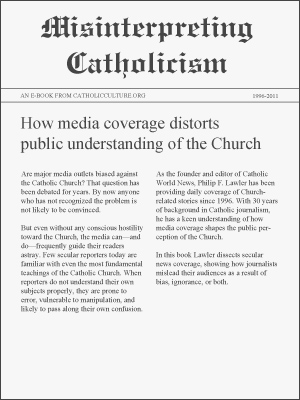Following the Roman Lenten Stations
By Jennifer Gregory Miller ( bio - articles - email ) | Feb 13, 2016 | In The Liturgical Year
Although I would never consider myself a Pollyanna, I try to remain positive when writing on the Church’s Liturgy and Liturgical Year. The Council of Vatican II brought many changes to the Liturgy, and although the closing of the Council occurred 51 years ago, I see the Church still struggling to find a balance with pre—and post-Vatican II liturgy and interpretations. Adding to the confusion is the fact that the Liturgy of the Latin Rite can be celebrated in two forms: the Ordinary Form and the Extraordinary Form (which follows the 1962 Mass and calendar). Many writers place a negative focus on the changes or differences between the two forms, often choosing one Form over the other. I personally want to highlight the many shared areas, pointing out the minor reforms that keep a liturgical tradition alive in both liturgical forms.
Roman Stations: Faded but Not Abolished
 Following the Station Churches in Rome is one liturgical tradition that has continued, although it isn’t publicized universally as it was before Vatican II. Two years ago I wrote: Roman Pilgrimage: The Station Churches which explained the tradition of Stational Churches and reviewed George Weigel’s book, Roman Pilgrimage: The Station Churches. This is my third Lent where I find myself returning to Weigel’s book for daily Lenten reflections and to spiritually follow in the footsteps of the Roman pilgrimage.
Following the Station Churches in Rome is one liturgical tradition that has continued, although it isn’t publicized universally as it was before Vatican II. Two years ago I wrote: Roman Pilgrimage: The Station Churches which explained the tradition of Stational Churches and reviewed George Weigel’s book, Roman Pilgrimage: The Station Churches. This is my third Lent where I find myself returning to Weigel’s book for daily Lenten reflections and to spiritually follow in the footsteps of the Roman pilgrimage.
This tradition has nothing to do with the Way or Stations of the Cross. The word “station” is taken from the Latin statio, meaning to stand. The Stations or Stational churches is a Roman tradition dating from early times. On Station Days, the Pope or his delegate would meet at a place (ecclesia collecta) with the community, and after the collect prayer they would solemnly process to the Station Church to assist at Mass. Older missals have an subheading on particular days of the Liturgical Year and every day in Lent naming the Stational saint: “Station at ____.” The faithful are stopping, staying awhile, praying, and meditating along with the saints of the Station and also venerating the holy relics of the saints and martyrs treasured in Rome’s old churches. There are 89 references of Stational Churches in the Liturgical Year, with Lent having a Station for every day.
This tradition has gone through various periods of renewal, with a big surge due to the Liturgical Movement before Vatican II. The Roman Stational Churches were revived again by the American seminarians from the Pontifical North American College beginning in the 1970s.
Relevancy to Catholics Outside of Rome?
Why follow this Roman tradition, even if we live on the other side of the world? For Latin Catholics, our eyes turn to Rome because it is our patria in Faith. All Catholics, no matter what rite, have this tie to Rome because it is the seat of Our Holy Father. The liturgy of the Roman or Latin rite has its roots from Rome. Desiring to visit the “Eternal City” is almost like tracing the family’s genealogy and desiring to experience in person the place of heritage. Just as our Jewish brothers and sisters pilgrim to the Holy Land, Catholics return to their home in Rome. In Rome we can walk in the centuries-old paths of our brothers and sisters, particularly the saints of the Stations:.
So vividly was the station saint before the minds of the assembled people that he seemed present in their very midst, spoke and worshiped with them. Therefore the missal still reads, “Statio ad sanctum Paulum,” i.e., the service is not merely in the church of St. Paul, but rather in his very presence. In the stational liturgy, then, St. Paul was considered as actually present and acting in his capacity as head and pattern for the liturgical worshipers. Yes, even more, the assembled congregation entered into a mystical union with the saint by sharing in his glory and by seeing him beforehand the Lord’s advent in the Mass... (Pius Parsch, The Church’s Year of Grace, Volume 2, p. 72).
The processing from church to church demonstrates our earthly pilgrimage to our eternal home. This universal Christian practice also reminds of our Roman heritage, and helps us pray as one body, encouraging and praying for one another, worshipping together as a universal community.
George Weigel points out the benefits in this modern area:
At yet another level, the station church pilgrimage—especially when it is made during Lent—is an itinerary of conversion. For while the linkage between the Lenten liturgy and the station of the day is not so tight as it was in the past, so many elements of tangency can be found between these churches and the prayers and readings the Church prays and ponders in them that the station church pilgrimage can become an extended retreat: seven and a half weeks of reflection that synthesize the truths of Christian faith and offer pilgrims an opportunity to reflect on how well those truths have been integrated along the pathways of their lives (Roman Pilgrimage, p. 10).
Being Pilgrims in our Home
 Years ago I read Monsignor Martin Hellriegel’s description of how he encouraged his parishioners and schoolchildren to follow the daily Roman Station spiritually, creating large maps to put on display and placed a large pin with a three-inch cross to mark the Station of the day (see Merely Suggesting, from Orate Fratres, Vol. XV, February 23, 1941, pp. 152-158). Florence Berger also wrote an article on how they followed along with her family, using a hand-drawn map. These articles have helped percolate some ideas for my family.
Years ago I read Monsignor Martin Hellriegel’s description of how he encouraged his parishioners and schoolchildren to follow the daily Roman Station spiritually, creating large maps to put on display and placed a large pin with a three-inch cross to mark the Station of the day (see Merely Suggesting, from Orate Fratres, Vol. XV, February 23, 1941, pp. 152-158). Florence Berger also wrote an article on how they followed along with her family, using a hand-drawn map. These articles have helped percolate some ideas for my family.
When my son told us that he mentioned in his school interview that going to Rome is on top of his wish list, I began to think that this might be the year to follow along the Lenten Stations. While the current or Ordinary Form isn’t as connected to the Roman Stations as the Extraordinary Form, there are still enough references to link our Lenten liturgy together and be united in spirit with Rome. In today’s age of scanners and Google Maps and websites, it is easy to “virtually” follow the Roman pilgrims.
Our family is using George Weigel’s book Roman Pilgrimage as the main guide, Pius Parsch’s The Church’s Year of Grace for the Extraordinary Form perspective, along with some Rome guide books and websites so we can visualize the churches, and various saint biographies to learn about the saints of the Stational Church. I enlarged the map found in my 1962 St. Andrew’s Missal in two pages and hung it on foam board near our dinner table. We will be using numbered pin map push pins to mark the journey in red (while I’m waiting for the pins to arrive I’m using regular map pins). Perhaps in other years we will use another map or make our own, but this is a small way to follow along in the Roman steps.
Although it’s a few days already into Lent, there are plenty more Stations to follow. I’m sharing the map of Rome in a .PDF file if you would like to join the Roman pilgrimage:
To see our family’s map in action, see A Peek Into our Daily Roman Stations Walk.
For Further Reading and Illustrations:
- Roman Pilgrimage: The Lenten Stations book review by Jennifer Gregory Miller
- A Peek Into Our Daily Roman Station Walk by Jennifer Gregory Miller
- The Stational Church by Jennifer Gregory Miller
- Florence Berger’s At Home: Lent and Easter
- Pontifical Academy of the Martyrs: Lenten Stations (Text in Italian)—the Academy has been encouraging the display and veneration of relics at the stational churches.
- The Pontifical North American College: The Roman Station Liturgy—includes commentary for each Stational day.
- Churches of Rome Wiki
All comments are moderated. To lighten our editing burden, only current donors are allowed to Sound Off. If you are a current donor, log in to see the comment form; otherwise please support our work, and Sound Off!
-
Posted by: james-w-anderson8230 -
Mar. 07, 2017 10:04 PM ET USA
Hi Jennifer, Your article prompted me to pick up my 1962 St. Andrews missal that my wife gave me as a wedding present. As you probably know Wikipedia has an article that also shows the other days that have Stational Churches: https://en.wikipedia.org/wiki/Station_days








